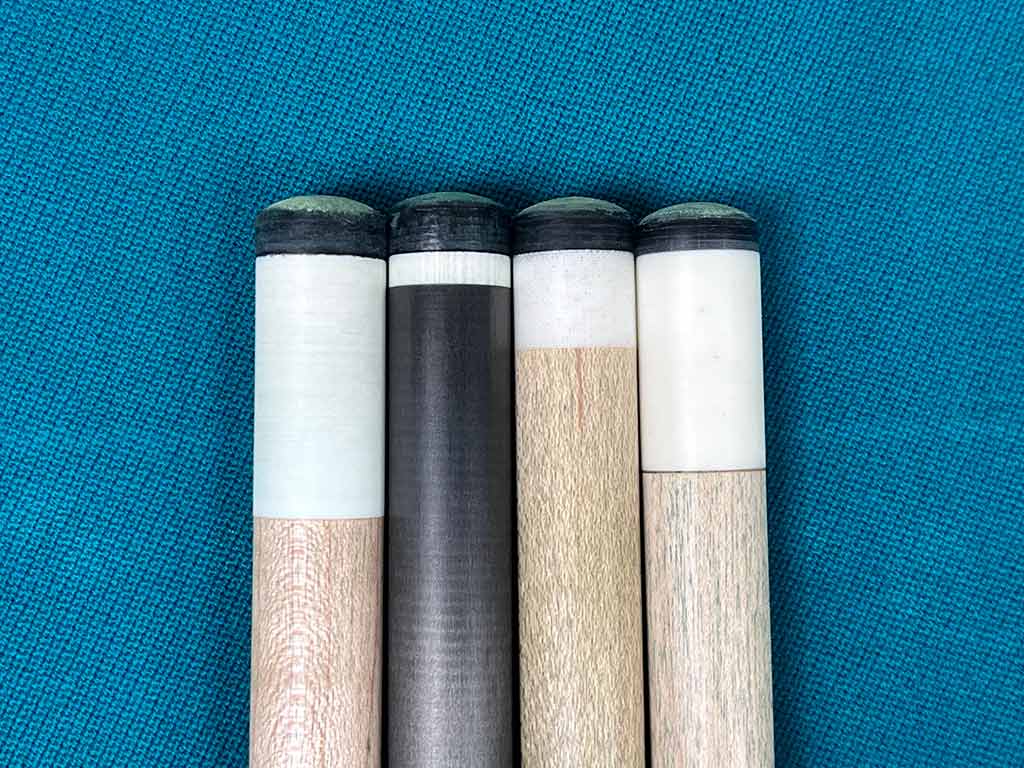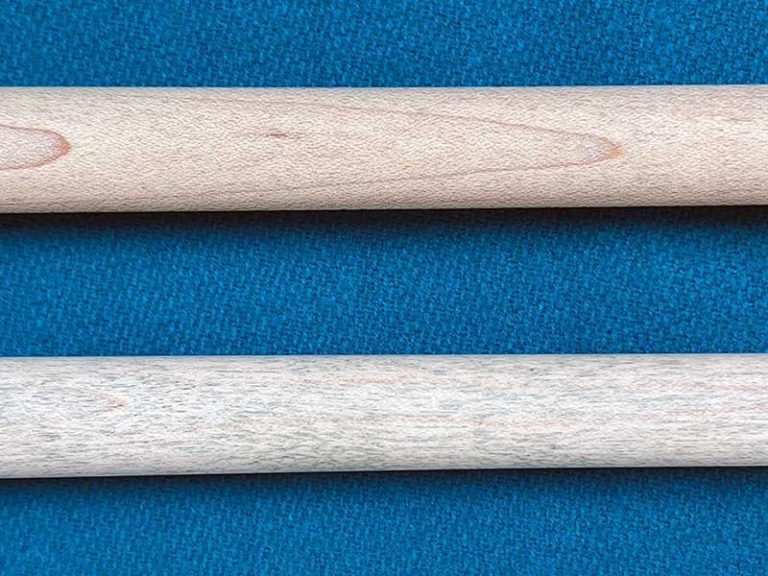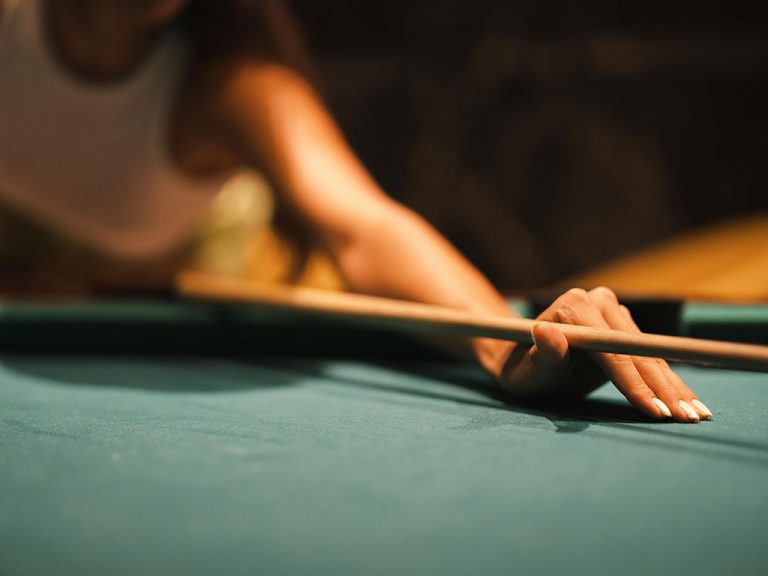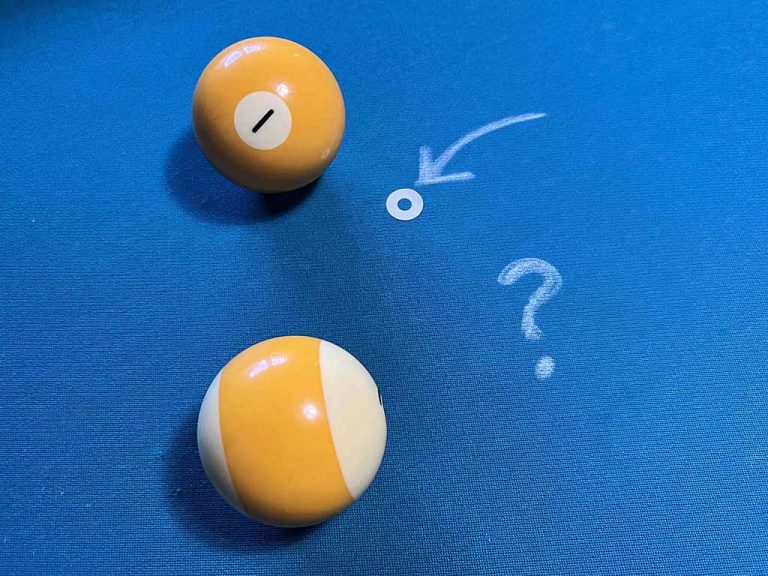As an Amazon Associate I earn from qualifying purchases.
Pool Cue Tip Repair 101
Proper care of your pool cue tip is crucial for maintaining optimal performance and ensuring a smooth, accurate game. In this post, we’ll cover three essential aspects of pool cue tip repair and care: shaping the tip, fixing mushrooming, and knowing when to replace the tip. Let’s dive into each of these topics in detail.
Shaping the Cue Tip
Shaping your pool cue tip to the correct radius ensures consistent contact with the cue ball, giving you better control and accuracy. The Willard Cue Tip Shaper is an excellent tool for this purpose.

When to Shape Your Cue Tip
Shaping your cue tip is necessary when:
- The Tip is Flat: Over time, the tip can become flat from regular play. A flat tip makes it harder to apply spin and can lead to miscues.
- After Installation: When a new tip is installed, it needs to be shaped to the correct radius for optimal performance.
- Worn Edges: If the edges of the tip become worn or frayed, shaping can restore its proper contour and functionality.
How to Shape Your Cue Tip with the Willard Cue Tip Shaper
- Choose Your Radius: The Willard Cue Tip Shaper offers two radius options: dime or nickel. Decide which radius suits your play style. Generally, a dime radius is recommended for more advanced control, while a nickel radius is suitable for general use.
- Insert the Tip: Place the Willard Cue Tip Shaper over your cue tip. Ensure the tip is centered within the shaper.
- Shape the Tip: Rotate the shaper back and forth over the tip while applying gentle pressure. The abrasive interior of the shaper will gradually shape the tip to the desired radius. Check the progress frequently to ensure even shaping.
- Use the Built-in Gauge: The Willard Cue Tip Shaper includes a built-in gauge that allows you to verify that your tip is shaped to the correct radius. This ensures precision and consistency.
- Finish Up: Once the tip matches the radius of a dime or nickel, remove the shaper and use a tip burnisher (i.e. old business card, cardboard, piece of leather, dollar bill, etc.) to smooth out any rough edges.
How to Scuff Your Cue Tip with the Willard Cue Tip Shaper
Scuffing your cue tip is essential to ensure it can effectively accept chalk, which improves your control and accuracy during play. The Willard Cue Tip Shaper can also be used as a scuffer.
- Place the abrasive surface of the shaper against the tip.
- Lightly rotate it to roughen the surface. This helps the chalk adhere better to the tip.
Fixing Mushrooming

Mushrooming occurs when the cue tip compresses and bulges out over the edge of the ferrule. While it does not have any real negative effect on performance, it can bother some people. There are special tools that reform the mushroomed part of the tip, but I prefer to get rid of the unneeded material all together. A right-handed or left-handed Japanese Kiradashi knife, which is beveled on one side, is perfect for trimming the tip without damaging the shaft.
How to Fix Mushrooming with a Japanese Kiradashi Knife
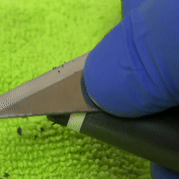
- Choose Your Knife: Select a right-handed or left-handed Japanese Kiradashi knife, depending on your dominant hand. The single-bevel design ensures precise cuts without scratching the shaft.
- Position the Knife: Hold the cue vertically with the tip facing up. Position the beveled side of the knife against the edge of the mushroomed tip, keeping the flat side flush with the ferrule.
- Trim the Tip: Carefully trim the excess tip material by running the wide part of the blade against the shaft upwards toward the tip. Rotate the cue as needed to trim the entire circumference of the tip. Take your time to ensure a smooth, even trim.
- Smooth the Edge: After trimming, use tip burnisher (i.e. old business card, cardboard, piece of leather, dollar bill, etc.) to smooth out the edge of the tip.
Replacing the Cue Tip
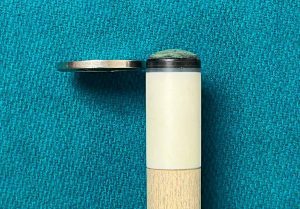
Knowing when to replace your pool cue tip is crucial for maintaining optimal performance. A worn-out tip can significantly affect your game, so it’s essential to replace it at the right time.
When to Replace Your Pool Cue Tip
- Check the Unshaped Part: Examine the unshaped part of the tip (the part that hasn’t been worn down by play). When this section is about 2mm thick or roughly the width of a nickel, it’s time to replace the tip.
- Look for Wear and Tear: If the tip appears frayed, cracked, or has lost its shape, it’s a good indication that it needs replacing, regardless of its thickness.
- Performance Issues: If you notice a decline in your shot accuracy, control, or feel, it may be due to a worn-out tip. Replacing the tip can restore your cue’s performance.
- Layered Tips: If you use a layered tip and notice it starting to delaminate (layers separating), it’s time to replace it. Delamination can affect the tip’s integrity and performance.
I always take my cue to my local pool cue shop for tip replacement. They have the expertise and tools to ensure the tip is installed correctly, maintaining the integrity of the cue and providing optimal performance.
By following these guidelines, you can ensure your pool cue tip remains in excellent condition, providing you with consistent performance and accuracy. Regular maintenance and timely replacement of your cue tip will enhance your overall playing experience and help you achieve better results on the table.

